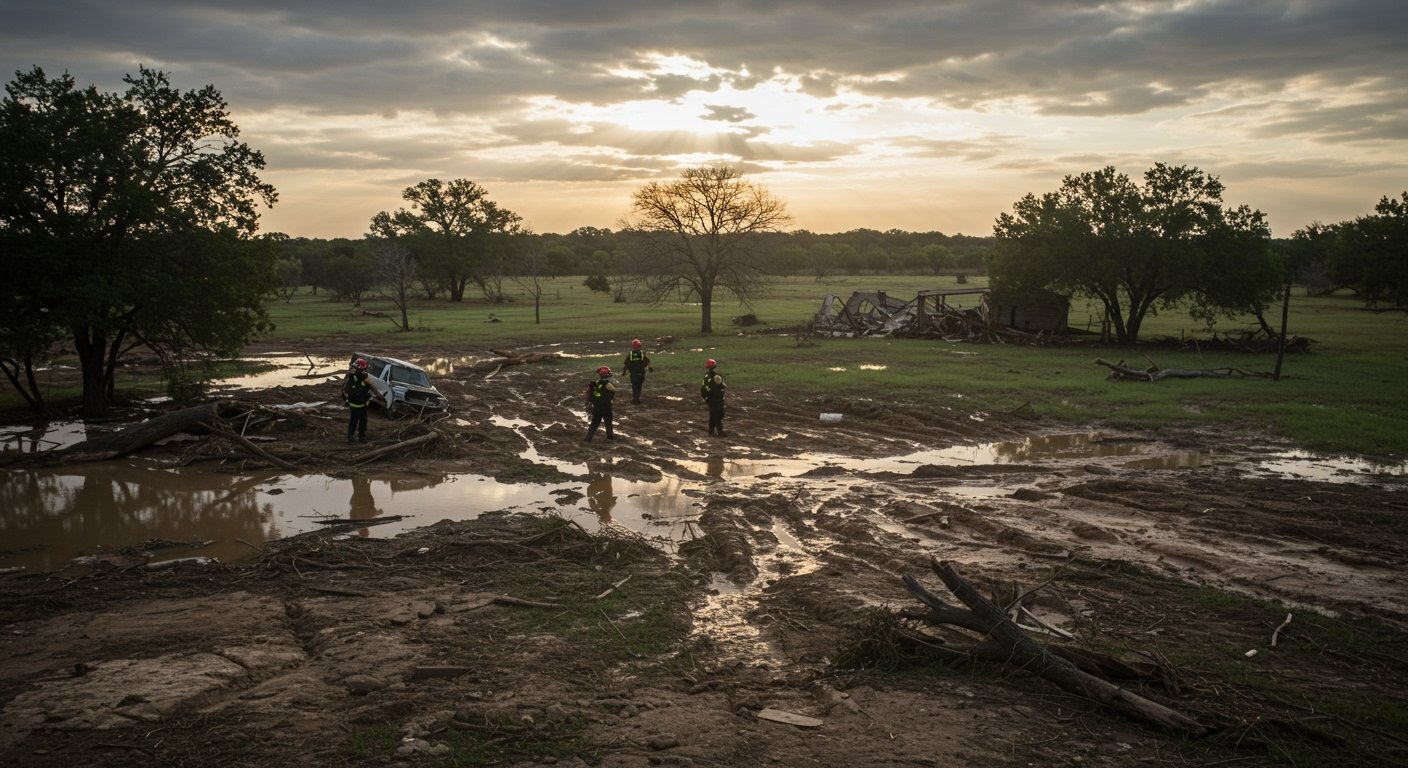The Texas Hill Country is grappling with the devastating consequences of catastrophic flooding that has reshaped the landscape and tragically claimed numerous lives. The scale of the disaster has prompted urgent calls for aid as communities navigate widespread destruction and loss.
Reports confirm that the flooding has resulted in a staggering 79 fatalities across the affected region. This grim statistic underscores the immense human cost of the natural calamity that struck with fierce intensity, leaving families and communities shattered.
Adding to the profound grief and anxiety, rescue crews are currently engaged in active search operations for missing individuals. Among those desperately sought are young girls from Camp Mystic, a detail that highlights the broad and indiscriminate impact of the floodwaters on individuals and institutions alike. The ongoing search efforts are a critical component of the immediate response, offering a glimmer of hope amidst the widespread devastation.
In the wake of such a significant event, the need for both immediate relief and long-term recovery support is immense. The disruption to infrastructure, homes, and livelihoods necessitates a coordinated and compassionate response from individuals and organizations alike.
Understanding the Scale of the Disaster
The designation of this event as “catastrophic flooding” reflects its severity and the overwhelming challenge it poses to the affected areas. The sheer volume of water, rapid inundation, and destructive force have left a trail of damage that will require extensive effort and resources to overcome. The tragic loss of 79 lives serves as a stark reminder of the flood’s deadly power and the urgent need for safety and recovery operations.
The focus on locating the missing girls from Camp Mystic underscores the personal tragedies unfolding within the larger disaster. Rescue teams are working tirelessly in difficult conditions, navigating treacherous terrain and debris in their urgent mission.
Providing Essential Aid: How to Give Help
For those seeking to assist the communities impacted by the Texas Hill Country floods, there are several crucial avenues for providing support. Giving help can take many forms, from financial contributions to donations of goods and volunteering time and skills.
Organizations specializing in disaster relief are typically on the ground, assessing needs and distributing aid. Contributing financially to reputable charities is often the most efficient way to help, as it provides flexibility for organizations to purchase necessary supplies locally and support recovery efforts as they evolve. These organizations can channel funds to meet specific needs, whether it’s providing temporary shelter, food, clean water, medical assistance, or support for long-term rebuilding.
Donations of essential goods, such as non-perishable food items, clean clothing, blankets, hygiene products, and cleaning supplies, are also vital. However, it is often recommended to donate through established collection points or organizations that can manage logistics and ensure items reach those who need them most without overwhelming local infrastructure.
Volunteering time and expertise can also make a significant difference. As recovery moves from immediate rescue to cleanup and rebuilding, skilled labor and general assistance are invaluable. Individuals interested in volunteering should typically coordinate through recognized volunteer organizations affiliated with disaster relief efforts to ensure safety and effective deployment of resources.
Before donating goods or volunteering, it is advisable to verify the needs communicated by official sources or trusted relief organizations to ensure efforts are aligned with the most pressing requirements on the ground.
Accessing Support: How to Receive Help
For individuals and families affected by the catastrophic flooding, navigating the process of receiving help is a critical step towards recovery. Numerous resources and forms of assistance are typically made available during and after a disaster of this magnitude.
The first priority is often ensuring safety and finding temporary shelter. Evacuation centers and shelters are usually established by local authorities and relief organizations to provide a safe place to stay, along with basic necessities like food and water.
Affected individuals should connect with disaster relief organizations operating in the area. These groups can provide immediate aid, guidance on accessing resources, and support for both short-term needs and the longer process of recovery. This includes assistance with obtaining essential supplies, navigating insurance claims, and accessing financial aid programs.
Government agencies, both state and federal, often provide disaster assistance programs. Registering with agencies like the Federal Emergency Management Agency (FEMA) is a crucial step for potentially receiving individual assistance, which can help cover temporary housing, essential home repairs, and other serious disaster-related expenses not covered by insurance.
Local community centers and non-profit organizations also play a vital role in connecting survivors with resources, offering case management services, and providing emotional support during this difficult time. Information regarding available resources, application processes, and eligibility criteria is typically disseminated through local news, government websites, and community outreach efforts.
Continued Rescue and Recovery Efforts
The work of rescue crews remains paramount, particularly as the search for the missing girls from Camp Mystic continues. These dedicated teams face challenging and often hazardous conditions, embodying the resilience and determination required in the face of overwhelming natural forces.
As rescue operations transition into broader recovery efforts, the focus will expand to include damage assessment, debris removal, and the monumental task of rebuilding homes and infrastructure. The path to recovery for the Texas Hill Country communities will be long and requires sustained support.
The catastrophic flooding in the Texas Hill Country has inflicted deep wounds, marked by the tragic loss of 79 lives and the uncertainty surrounding the missing individuals. The resilience of the human spirit is evident in the ongoing rescue efforts and the outpouring of support from those seeking to give and receive help. As the region begins the arduous journey towards healing and rebuilding, the collective effort of aid and assistance will be indispensable in restoring stability and hope to the affected communities.






